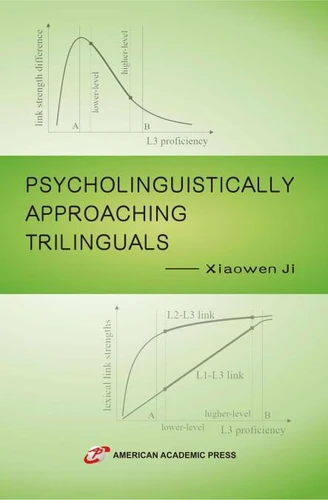Psycholinguistically Approaching Trilinguals
Par :Formats :
Disponible dans votre compte client Decitre ou Furet du Nord dès validation de votre commande. Le format ePub est :
- Compatible avec une lecture sur My Vivlio (smartphone, tablette, ordinateur)
- Compatible avec une lecture sur liseuses Vivlio
- Pour les liseuses autres que Vivlio, vous devez utiliser le logiciel Adobe Digital Edition. Non compatible avec la lecture sur les liseuses Kindle, Remarkable et Sony
 , qui est-ce ?
, qui est-ce ?Notre partenaire de plateforme de lecture numérique où vous retrouverez l'ensemble de vos ebooks gratuitement
Pour en savoir plus sur nos ebooks, consultez notre aide en ligne ici
- FormatePub
- ISBN8227107664
- EAN9798227107664
- Date de parution02/07/2024
- Protection num.pas de protection
- Infos supplémentairesepub
- ÉditeurBig Dog Books, LLC
Résumé
This book studies Dutch-English-Mandarin trilinguals to answer research questions about trilinguals' mental lexicon representation pattern, routes for L3 conceptual access, and the role of instruction language herein. To gain scientific and reliable results, interviews, questionnaires and experiment series were all adopted for different purposes. Besides, this study compares trilinguals with lower and higher L3 levels to map the developmental trajectories of trilinguals' mental lexicon representation and L3 conceptual access.
The current research proposes a three-stage hypothesis and a parabola-shaped model, to explain the role of L2 as instruction language throughout L3 learning process and its contrast with the role of L1. Moreover, Trilinguals' All-Connected Models of mental lexicon representation and L3 conceptual access are the first attempts to give detailed descriptions of trilinguals' mental lexicon representation and L3 conceptual access from both static and developmental perspectives.
Furthermore, it sheds light on foreign language teaching and learning practice, and contributes to further improving overseas Chinese language teaching and culture spreading performances, thus fulfilling its theoretical, methodological and practical values.
The current research proposes a three-stage hypothesis and a parabola-shaped model, to explain the role of L2 as instruction language throughout L3 learning process and its contrast with the role of L1. Moreover, Trilinguals' All-Connected Models of mental lexicon representation and L3 conceptual access are the first attempts to give detailed descriptions of trilinguals' mental lexicon representation and L3 conceptual access from both static and developmental perspectives.
Furthermore, it sheds light on foreign language teaching and learning practice, and contributes to further improving overseas Chinese language teaching and culture spreading performances, thus fulfilling its theoretical, methodological and practical values.
This book studies Dutch-English-Mandarin trilinguals to answer research questions about trilinguals' mental lexicon representation pattern, routes for L3 conceptual access, and the role of instruction language herein. To gain scientific and reliable results, interviews, questionnaires and experiment series were all adopted for different purposes. Besides, this study compares trilinguals with lower and higher L3 levels to map the developmental trajectories of trilinguals' mental lexicon representation and L3 conceptual access.
The current research proposes a three-stage hypothesis and a parabola-shaped model, to explain the role of L2 as instruction language throughout L3 learning process and its contrast with the role of L1. Moreover, Trilinguals' All-Connected Models of mental lexicon representation and L3 conceptual access are the first attempts to give detailed descriptions of trilinguals' mental lexicon representation and L3 conceptual access from both static and developmental perspectives.
Furthermore, it sheds light on foreign language teaching and learning practice, and contributes to further improving overseas Chinese language teaching and culture spreading performances, thus fulfilling its theoretical, methodological and practical values.
The current research proposes a three-stage hypothesis and a parabola-shaped model, to explain the role of L2 as instruction language throughout L3 learning process and its contrast with the role of L1. Moreover, Trilinguals' All-Connected Models of mental lexicon representation and L3 conceptual access are the first attempts to give detailed descriptions of trilinguals' mental lexicon representation and L3 conceptual access from both static and developmental perspectives.
Furthermore, it sheds light on foreign language teaching and learning practice, and contributes to further improving overseas Chinese language teaching and culture spreading performances, thus fulfilling its theoretical, methodological and practical values.



